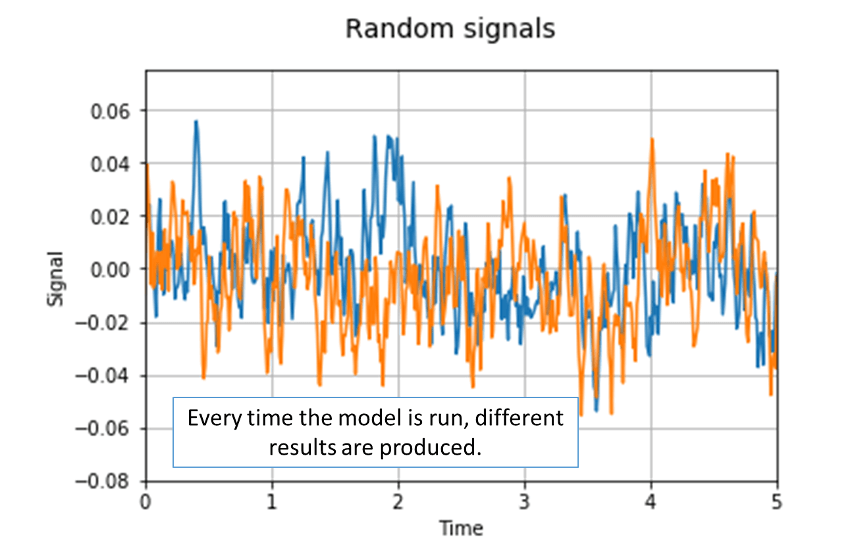Stochastic Modeling
What is Stochastic Modeling?
A stochastic model is a technique for estimating probability distributions of possible outcomes by allowing for random variations in the inputs. These models are used to include uncertainties in estimates of situations where outcomes may not be completely known. The distributions are obtained from a large number of simulations that reflect the randomness in the inputs.
Different from deterministic models, which consider uncertain factors as exogenous to the model and always provide the same results for the same inputs; stochastic models consider randomness as part of the model, and as a result, every time a stochastic model is run with the same dataset and initial conditions a different result is obtained (Figure 1).

Figure 1: Random signals
While deterministic models are easier to analyze, stochastic models tend to represent phenomena more realistically, particularly when considering small samples.
However, there is a grey line between deterministic and stochastic models, which is represented by chaos theory. This branch of mathematics focuses on the study of dynamical systems where their apparent randomness is ruled by patterns and deterministic laws that are very sensitive to initial conditions.
Why are Stochastic Models Important?
Stochastic models started in physics and are now being applied in engineering, social sciences, finance, and any other areas of research where uncertainty exists.
Businesses and industries employ them to plan and strategize their actions. In finance, analysts and portfolio managers use stochastic models to manage and optimize their portfolios. In the insurance industry, they are used to predict balance sheets and possible event outcomes. Similarly, their usage extends to other disciplines such as statistics, linguistics, biology, quantum physics, and quantum programming.
Stochastic Modeling + LogicPlum
Although stochastic models can be difficult to design and handle for the non-expert, LogicPlum’s users can rely on the platform’s contained knowledge. This body of knowledge has been crafted by expert data scientists and software engineers and is regularly updated by LogicPlum. It is used by the platform’s engine in an automated manner, ensuring that the correct and optimal features and concepts are properly applied. Through this technology, LogicPlum makes modern modeling an accessible tool for all businessmen and researchers.
Additional Resources
Taylor, H.M. and Karlin, S. (1998). An Introduction to Stochastic Modeling. 3rd Ed. San Diego. Academic Press








